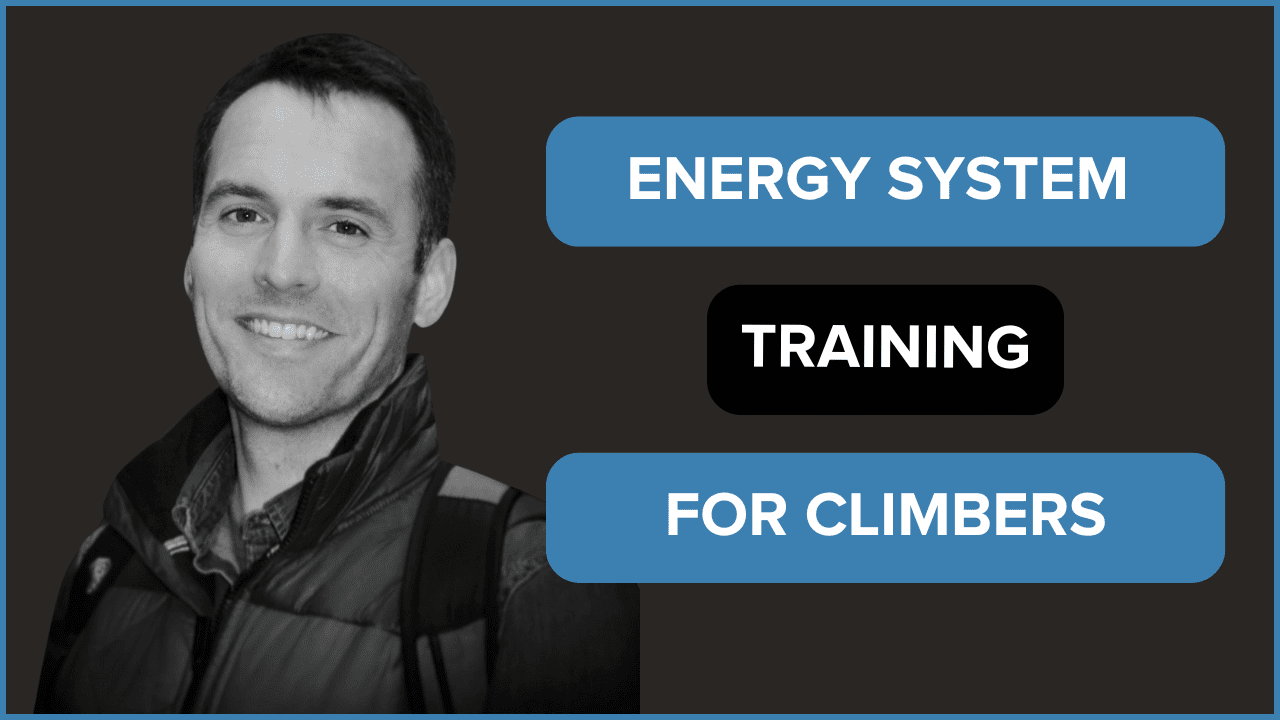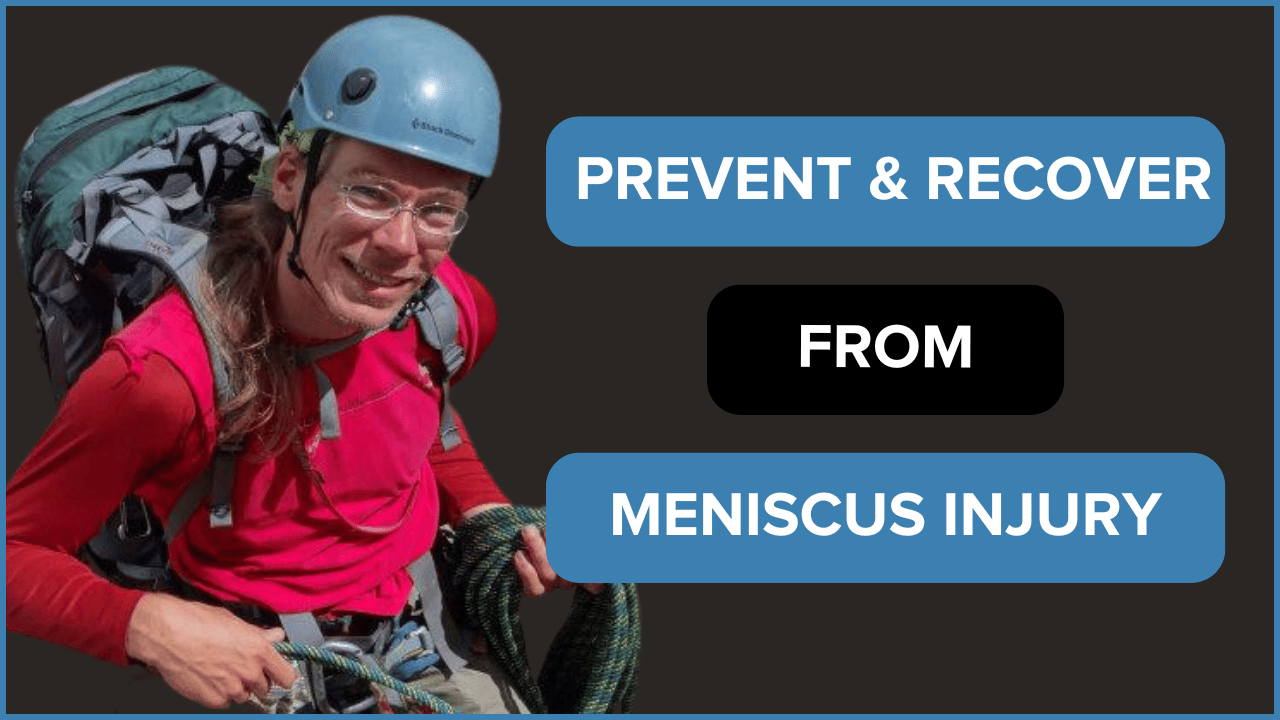S1, E10: Preparation is Everything – Robyn Erbesfield Raboutou
In this video, The Climbing Doctor Interviews 4-time Climbing World Cup Champion Robyn Erbesfield-Raboutou, delving into her personal routines, coaching philosophies, favorite climbing drills, and how she has managed to maintain her health through a lifetime of tough climbing.
Listen on Apple Podcasts, Spotify, or wherever you listen to podcasts!
- 0:00 Robyn Erbesfield Raboutou intro
- 0:56 Robyn Erbesfield Raboutou’s thoughts on family and what motivates/inspires her
- 2:42 Robyn Erbesfield Raboutou’s warm up routine
- 7:14 Team management/warm up in team setting
- 10:49 Supplemental exercise routine – progressions, addressing weak links, maintenance
- 15:31 Common areas of weakness, injury prevention, and how to address them
- 19:56 What distinguishes elite level climbers
- 21:47 Robyn Erbesfield Raboutou’s favorite drills
- 22:56 RR’s advice on injury management
- 24:53 Outro
If you would like to listen to the entire interview with Robyn, check out the podcast. If you want to watch the interview, click the YouTube link or any of the timestamps above. If you would like to read quick sample of the interview, check out the excerpt from the interview below.
Robyn, can you introduce yourself and your background?
My name is Robyn Erbesfield-Raboutou. I’m a world cup champion and have been a competitive climber for many years. I have about 30 years of coaching experience, mostly with youth climbers. My biggest claim to fame is ABC Kids Climbing, where my team and I have created this youth program that’s quite world-famous. Then of course the passion that my children Sean and Brooke share. They are quite well known in the climbing world and have a strong passion for climbing. To me and my husband, who is also a climber, it’s been amazing that we’ve been able to share that as a family. So, that’s who I am.
To start, is there any routine, any habit, any pattern that you personally do when you’re warming up for climbing?
I think one of the things that I’ve learned throughout my years is how important warming up is. I’ll take a short run or do some jumping jacks, something of that level, just to get my heart rate up for the first 10 minutes. Get the blood flowing. For me personally, at my age, I pay special attention to my fingers before I start, with some exercises for mobility. Fingers mobility is important. Overall getting the body warmed up and the blood flowing. I’m usually ready to fire in about 20 or 30 minutes with a good routine.
Have you ever overdone your warm-up routine and felt a drop in your performance?
Yeah, 100 percent. I think a lot of people over warm-up. I know that I used to over warm-up back in the day when I was training hard for competitions. What we’ve learned now is that we do want to save ourselves for the peak performance and there is a fine line. I think a lot of athletes figure that out quickly, but not without a little trial and error. It can be that you go into your warm-up too fast and that can spoil your end result. I think that most coaches that are following athletes can help the athlete find that sweet spot. And ideally you want to find what’s right for you. When I say 20 minutes is about right, for me, I can usually after about 20, maybe 30 minutes, get into my level of climbing without any risk of injury. I might need a little more time if my fingers are feeling a little rough. I might need to hang on my fingers a little bit more in a protected and programmed way, rather than just getting into a problem that could eventually be detrimental to my fingers. I think being willing to adapt in your warm-up is important.
Are there different warm-up routines you do while coaching teams? How does that work for groups?
That’s a good question. You’re generally addressing the group and hopefully encouraging them to meet their own needs. You obviously know what’s right for you. But at the same time, someone might have an injury. We’ll talk on the side about how they should take it easy and ease into it. Their needs might be different. But overall, what we try to do is just have diversity. We change it up a lot. We just try to keep the kids stimulated. The younger, the kid, the more games. The older the kid, like our 18, 19-year-old elite team, they’ve got their competition warm-ups and a lot of things that we’ll play. It’s much more individual for them. We have to keep it fun and have variety, especially for the groups. We do encourage them as we get closer to a competition to define their warm-up. Such as dictating a warm-up and then having them do the same thing every single time until the competition. So, we explore different things throughout the season until we get close to the bigger championship events. Then we expect that they’d have a defined warm-up. When we talk about warm-ups, there’s many different levels of warm-ups. We have a bit of a trademark or a brand for our warm-up, which is kind of a head-to-toe movement. You’re basically stationary in one place. But there are different exercises that they know that are going to warm them up before they get into the meat and potatoes of their workout.
Do you personally have any supplemental exercises that you do to make you stronger for climbing?
I do quite a bit of performance training. I go through periods and phases where I do different things, but I try to maintain a one or two days a week performance training schedule. I often do the same for the teams as well, or at least for the older kids, I try to maintain a one or two days a week of strength training. Hangboarding particularly or maybe I’ll do repeaters on one of the days. And then three to four days later when I do the next session it may be more strength like max hangs. There’s a lot of variety in there. I might do max pull-ups as well. I might do some one arm practice. I’ll definitely do some pinch pulls. We do some pinch pulls both narrow and wide. I know for me; I feel like pinches are a weak link. So, the more I sort of don’t let that go, if I don’t work on my pinch strength and then I don’t feel good on pinches, I can only blame myself. So, I try one day a week to have a pinch routine in place for strength training, where I’m at least checking that box, that I’m working on my pinch strength. And then if I’m still having trouble, I can accept that a lot better than if I haven’t been working on my pinch strength.
What about repetitive movement? Are there common errors or techniques that you notice in climbers that could possibly lead to injury, and what could they do to prevent that from happening?
Injury prevention is a great, great thing to talk about. And I feel like if I speak for myself personally, at my age and my interest in climbing, one of the areas that I notice I’ve had some red flags on is hamstrings. And I’m like, okay, well, if this is happening, you need to do something about it or it’s going to get worse. Like when I do heel hooks, it’s kind of like a system. But my theory with that is, if I run into a problem, while climbing for example, if it’s left heel intense from the beginning, as soon as I get into it, no wonder my hamstrings are about to explode. If I’m five heel hooks in on hard boulders and if I’m not heel hooking any other day of the week, I’m basically going from 0 to 100. It’d be like, if I decided my fingers would just always be strong, but I didn’t do anything other than go try really hard. Of course, my fingers are going to break. So, I realized pretty early on that I needed to train my lower body in repetition of specific movements and heel hooks. I just do repeaters where I’ll repeat it several times on both sides, rest, and then repeat again. And you can also do finicky heel hooks. You can do heel hooks that are a little bit harder to hold, and you can do much bigger ones. Kind of like if you hung on a 20-millimeter edge or you hung on an 8-millimeter edge.
That’s a very common, acute injury that happens without warming up properly or without habituating and loading and getting used to it.
If you think about it, it’s something that we really don’t do until we have to do it. It seems like if, you came to me and I was in your shoes and you said, “God, I’ve got this P 11, that I try all the time and it’s like really small, cramped…” And I’d say, “Well, what do you do when you’re not on that boulder?” And you’re like, “Oh, I just work.” How do you expect to not break your fingers? Especially if you don’t maintain some kind of mobility or strength training along the way to solicit those fingers before you have to put them at 100, you know, it’s like I said, 0 to 100. You can’t be at 0. You really have to train all of those things.
Are there any movements or patterns that you notice that differentiate the higher-level climbers from the more moderate-level climbers?
Well, I mean, I’m a firm believer that everyone can become good at doing something. I wouldn’t say that if you don’t have good movement that you won’t get good movement. But by all means there are those fast twitch climbers that you watch them on the wall, and they just have it. Like my son is one. He’s just amazing to watch. It’s just like, if I watch him on a skateboard, he is good. If I watch him playing with my dog, he’s just fast, he’s got really good coordination. And I think it shows in his climbing. Then put that together with really good footwork and you know, all those things, and you’ve got the whole package. It’s not unusual to break those steps down. We do that in practice for the kids where we break down those different elements. We can work it into a kind of a weightlifting environment where it’s like step-ups or run-a-drums across the wall or compression movements where we’re having to move maybe two hands at once to improve the coordination. So, I mean, there’s no doubt that some people have that, and others don’t. But everyone can get there if they recognize that’s what they want. They recognize that as maybe a weakness or if it’s a strength, chances are they need to develop something else. Maybe it’s standing and smearing on their feet in a different way.
If you were to look at all the kinds of drills or things that you would use during practice, do you have a favorite that you like to utilize with your team?
We do play games, like the “Dyno” game, which is just a favorite of mine and a favorite for the kids, where they make up dynos. For instance, like you and I would make up three dynos and then two other people would make up three dynos, and two other people. And then we share, and it’s like a dyno comp. So, like you and I would demonstrate our dynos and then everyone else would get the chance to do it. They only get one try, but they’d have one try to basically get a point and they would go to the next boulder. So, what’s nice about that is the time that you spend creating the dynos with your partner and then you get to get exposed or be exposed to all the other dynos within your group, and it’s a mini competition because each group gets a point if they do the dyno of the others, including their own.
In closing, as far as with injuries, do you have any advice? Have you ever had any serious injuries of your own?
I’ve been very fortunate that I have not had any injuries and I really take that back to my days when I started climbing. I started traditional climbing where I couldn’t really climb any harder than my ability to get the rope up myself. So, I rarely had the opportunity to clip a bolt and then try the next section. If I couldn’t hang in there and put a piece of gear in, which develops endurance and fortifies the tendons, that I couldn’t do it. And I think having that be the first few years of my career, probably fortified my body. Otherwise, I’m in touch with when things do hurt. And I think the biggest advice is just know your body, and tomorrow’s another day. Next week is another day. It’s better to step back and not push because otherwise you might be out for a much longer period of time. And then the maintenance things that we talked about within this interview is just like doing repeaters, solicit those, solicit those parts of the body that you’re going to really ask to be there for you. So don’t expect to have strong fingers and not to break them if you’re not going to train them a little bit throughout the week, same with the hamstrings. Get a routine going so that your body isn’t going from 0 to 100, the moment that you do go outdoor climbing or get to the competition or whatever, you need to look at what are you preparing for? I say all the time, ‘Don’t study math. If you’re going to be tested in science.”
Where can people follow you?
On Instagram @robyn_erbesfield_raboutou
And ABC bouldering can be followed on the webpage: https://www.abckidsboulder.com/
- Disclaimer – The content here is designed for information & education purposes only and the content is not intended for medical advice.




